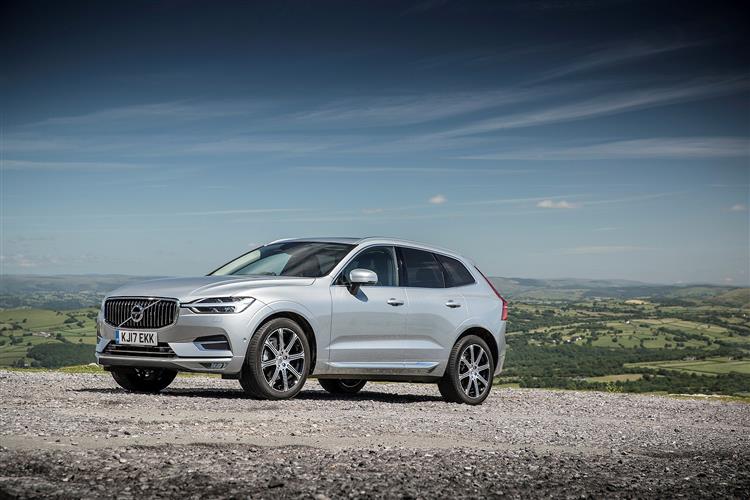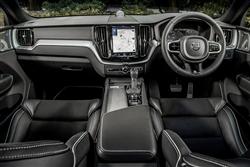How will you view?
This is a sample, showing 30 seconds of each section.
SWINGING SIXTY (some text hidden) SECTIONED_new_volvoxc60_2017
By Jonathan Crouch
Introductionword count: 92
Think of a premium-badged mid-sized SUV and you probably think of something German - maybe also a Jaguar or Land Rover product. We'd also suggest though, that you should be looking at the car we're going to look at here, Volvo's elegant and beautifully crafted second generation XC60, proof that in Sweden, they build SUVs just a little differently. Safe, efficient, clever, practical and stylish, it's yet another model that re-establishes this Scandinavian maker as a credibly prestigious automotive brand. Here, we look at the earlier 2017-2021-era versions of this MK2 design.
Modelsword count: 15
5dr SUV (EV) (petrol) [T5, B5, B6, T6 PHEV, T8 PHEV] / (diesel) [D4, B4]
Historyword count: 336
Today, the majority of Volvo's business is done in selling SUVs - cars like this XC60. Here, we look at the second generation version of this car, which built upon a success story than made its predecessor the best selling Volvo model ever. That original XC60 model was launched back in 2007 and sustained the Gothenburg manufacturer in the difficult period that covered the transfer of company ownership from Ford to the Chinese conglomerate Geely Automotive. Geely took control in 2009 and promptly invested £6.27 billion in new product development, but it wasn't until 2014 that we saw the first signs of it, with the launch of the car that inspired this one, the XC90. That large luxury SUV showed off the new 2.0-litre 'Drive-E' engines and 'SPA' 'Scalable Product Architecture' that all future large and mid-sized Volvo models would use, components subsequently shared with the S90 and V90 executive saloon and estate models that followed shortly afterwards. It was this second generation XC60 though, launched in the Summer of 2017, that showcased this technology to the widest audience. This mid-sized premium SUV was the most important of Volvo's more luxurious 'SPA'-platformed cars - the smaller XC40 model used the company's smaller 'CMA' 'Compact Modular Architecture' chassis that was intended for the brand's more compact contenders. That car was essentially a family hatch with Crossover cues. This one in contrast, had to be in every way a proper SUV, offering everything you get in a prestigious XC90 but in a slightly more compact five-seat package. Volvo introduced its mild hybrid engines to this car in 2019, which could be had in B4 diesel and B5 or B6 petrol forms. In 2021, the T8 Plug-in Hybrid which had been available since 2018 was joined by more affordable T6 Plug-in Hybrid variant. At about the same time in Spring 2021, a lightly facelifted XC60 range arrived complete with the new Android-based infotainment system. It's the earlier 2017 to 2021 versions of this car though, we look at here.
What You Getword count: 290
If you like the look of this MK2 XC60, you'll probably be one of those people who already liked the shapely lines of the second generation version of its larger XC90 stablemate. Much of the same design language is, after all, carried directly over, creating a sleek, distinctly Scandinavian SUV that isn't particularly flashy but delivers an understated, confident demeanour that potential buyers will like. Inside up-front, high-quality materials, intelligent use of space and attention to detail work together to create a distinctly Scandinavian cabin that's simple and elegant. The first thing you'll probably notice is the 9-inch portrait-style touchscreen on the centre console that de-clutters the cabin of buttons and gives it a classy, sophisticated air emphasised by intricate detailing and rich Scandinavian design. There's more technology in the instrument binnacle where the normal conventional dials and read-outs are replaced by virtual ones in an 'Active TFT Crystal Driver's Information Display'. Getting into the back, the rear doors could do with opening out a few more degrees which would help in getting bulky objects like child seats in through the slightly restricted doorway aperture, but once inside, there's decent space for shoulders and heads and the kind of room for knees and legs that you'd expect from an SUV 4.7-metres in length. The rear headrests are well placed and comfortable - and they also fold down at the touch of a button on the centre-dash touchscreen up-front. The boot is accessed via a standard power-operated tailgate that you can adjust to suit the height of your garage ceiling. When raised, it reveals a cargo area rated at 483-litre boot (it's 468 in the PHEV model), extendable to 1,410-litres once you fold the rear bench (it's 1,395-litres in the PHEV).
To see the full road test text contact us on 0330 0020 227
Pictures (high res disabled)

.jpg)
|
.jpg)
|
.jpg)
| |||
.jpg)
|
.jpg)
|
.jpg)
| |||
.jpg)
|
.jpg)
|

|
Scoring (subset of scores)
Category: Crossover or SUV 4x4s
| Performance | |
| Handling | |
| Comfort | |
| Space | |
| Styling, Build, Value, Equipment, Depreciation, Handling, Insurance and Total scores are available with our full data feed. | |



